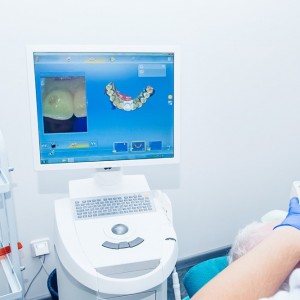
Color in dentistry: is gender influencing shade selection?
Lorenzo Breschi
Color has been scientifically investigated by linking color appearance to colorimetric measurements of the light that enters the eye. However, the main purpose of color perception is not to determine the properties of incident light, but to aid the visual perception of objects and materials in our environment.
The decision of the right color of a restoration is always a critical step in restorative and prosthetic dentistry, as the final result of the manufactured fabricated by the dental technician. It mostly depends on the preliminary evaluation of the shade matching the remaining dentition. The wrong shade selection is the second most frequent reason for the failure and consequent repetition in the fabrication of indirect restorations. The dental technician who produces the prosthesis usually does not directly see the patient and often relies on the written prescription of the clinician which is based on the available shade guides. Thus, the final aesthetic result of the restoration is mutually dependent on the two operators, the dentist and the dental technician.
The shade selection can be instrumental or visual; the first one is objective, quantifiable and time saving. However, instruments for shade classification are basically designed for flat surfaces, so the reliability of shade matching on curved surface of tooth is questionable. On the other hand, the visual approach depends on a series of visual scales and physical and psychological interacting factors, such as stimulation, sensation, and perception of the observer that become critical point and could cause possible individual variation in the perception of the color. Factors such as age, gender, and clinical experience of the dental professional along with fatigue, emotions, lighting conditions, metamerism, type of shade guide, material used for the fabrication of prosthesis etc. are known to influence shade selection.
A study conducted by Aswini et al., from Amrita School of Dentistry, evaluated the effect of gender and clinical experience on shade perception by dental professionals. The cross-sectional study was performed in a dental school in India during the period of June 2017 to February 2018.
A total of 100 dental professionals with normal color vision who were categorized as dental students, dental doctors and dental specialists were included in the protocol. The study consisted on the identification of masked shade tabs to that of a complete set of shade guide.
Two shade guides tabs (VITA PAN Classical shade guide, VITA—Zahnfabrik, Germany) were used in the study. A2 and B2 shades tabs from the first shade guide were chosen. The identification mark on the shade tabs were masked with black adhesive tapes and labeled X and Y. The masked X and Y shade tabs were given to the participants and were asked to match the given shade to a complete set of shade guide.
The authors concluded that shade matching is critical in prosthetic and esthetic dentistry but, there is no significant effect of the gender and clinical experience on shade selection. Therefore, proper shade matching isn’t an individual decision but a confluence of multiple opinions and considerations.
(Photocredit: Dr. Allegra Comba)
For additional information: The effect of gender and clinical experience on shade perception
 Related articles
Related articles
Restorative dentistry 03 November 2025
The worldwide interest of both dentists and patients in esthetic dentistry has affected decision-making in dental practice.
Restorative dentistry 12 September 2025
Traumatic tooth injuries involve function and aesthetics and cause damage that range from minimal enamel loss to complex fractures involving the pulp tissue and even loss of the tooth crown.
The purpose of restorative dentistry is to restore and maintain health and functional comfort of the natural dentition combined with satisfactory aesthetic appearance.
Oral surgery 15 July 2025
The influence of patients' decisions on treatment planning in restorative dentistry
As part of treatment planning, options are presented to patients by dentists. An informal discussion takes place involving a cost-benefit analysis and a treatment plan is agreed.
Restorative dentistry 01 July 2025
Advances in CAD/CAM Technology for Chairside Restorative Dentistry: A Workflow Analysis
Chairside CAD/CAM technology has revolutionized restorative dentistry, offering streamlined workflows and improved patient outcomes.
 Read more
Read more
Much like EMTs rushing to the scene after an accident, stem cells hurry to the site of a skull fracture to start mending the damage. A new finding has uncovered the signaling mechanism that triggers...
Products 05 November 2025
SimplyTest has launched a groundbreaking saliva-based test to detect high-risk strains of oral human papillomavirus (HPV), a major cause of oropharyngeal cancers.
News 05 November 2025
Perimetrics, Inc., a dental technology company pioneering quantitative diagnostics, announced today that the U.S. Food and Drug Administration (FDA) has granted clearance for the InnerView...
News 05 November 2025
On October 15, open enrollment for Medicare began nationwide. Hundreds of thousands of seniors in New Jersey will once again face the challenge of finding the right Medicare coverage, including the...
Digital Dentistry 04 November 2025
Digitalisation is an expanding field in dentistry and implementation of digital teaching methods in dental education is an essential part of modern education.


.png)












